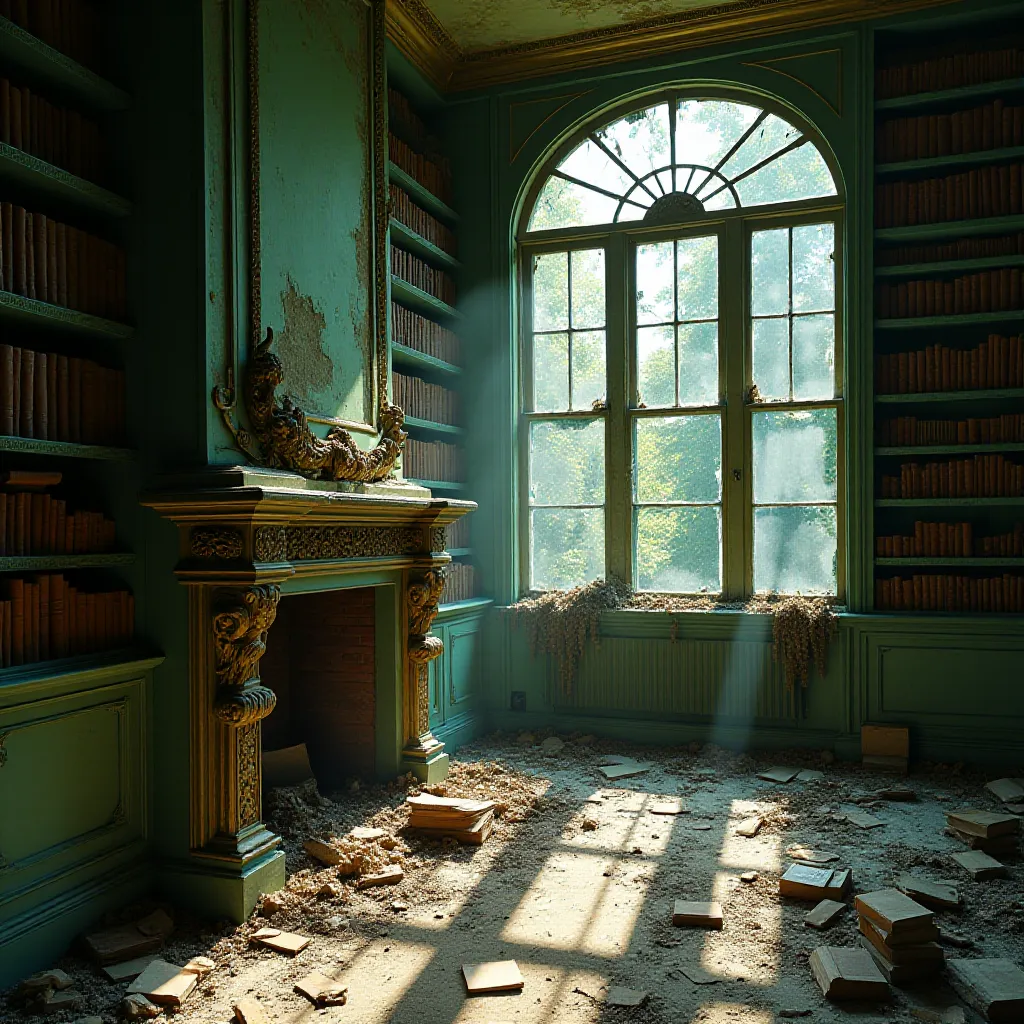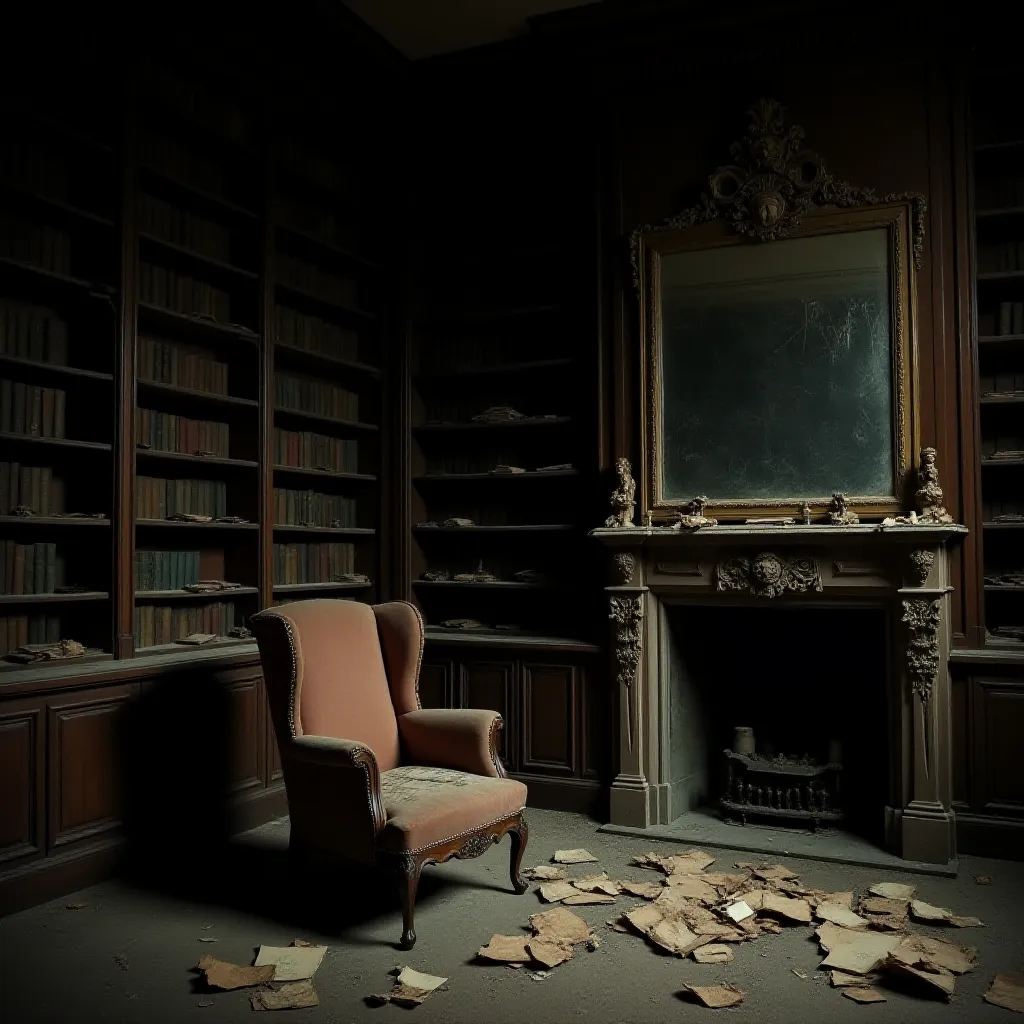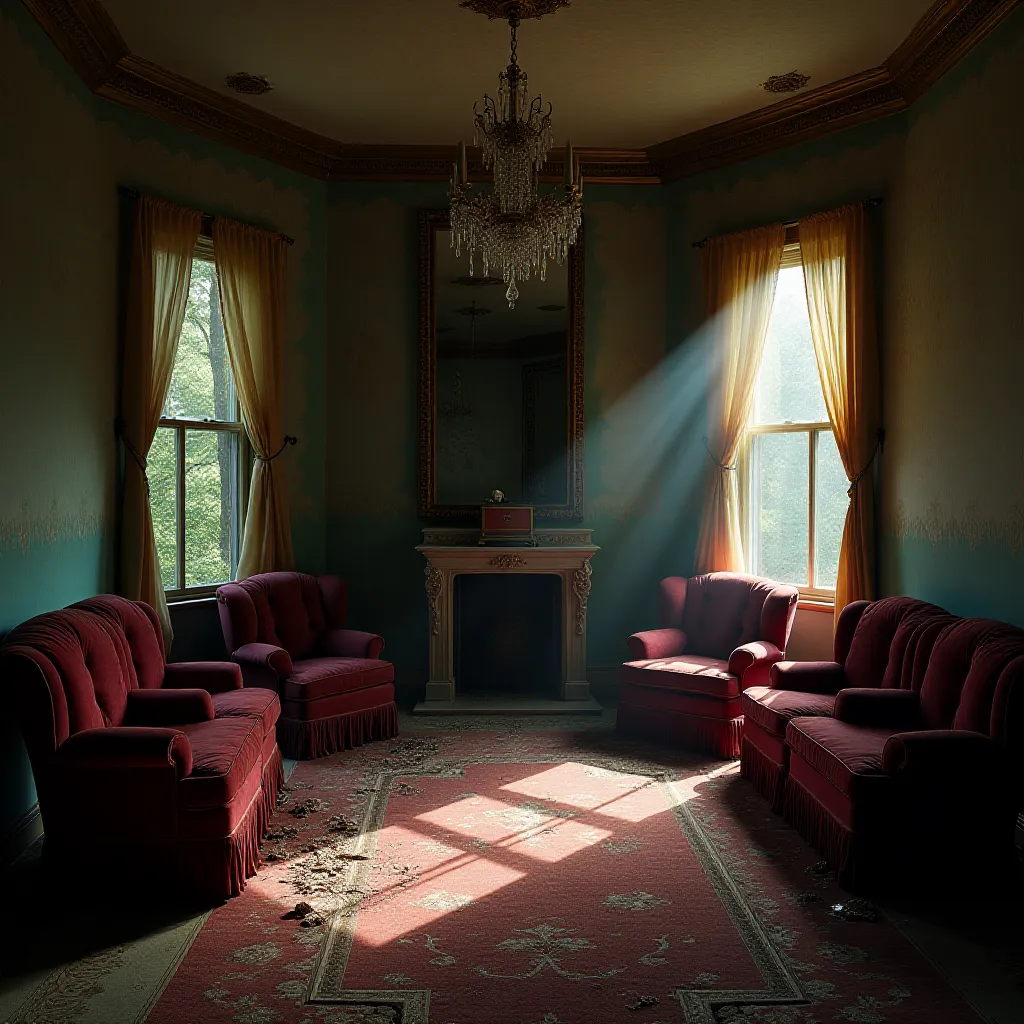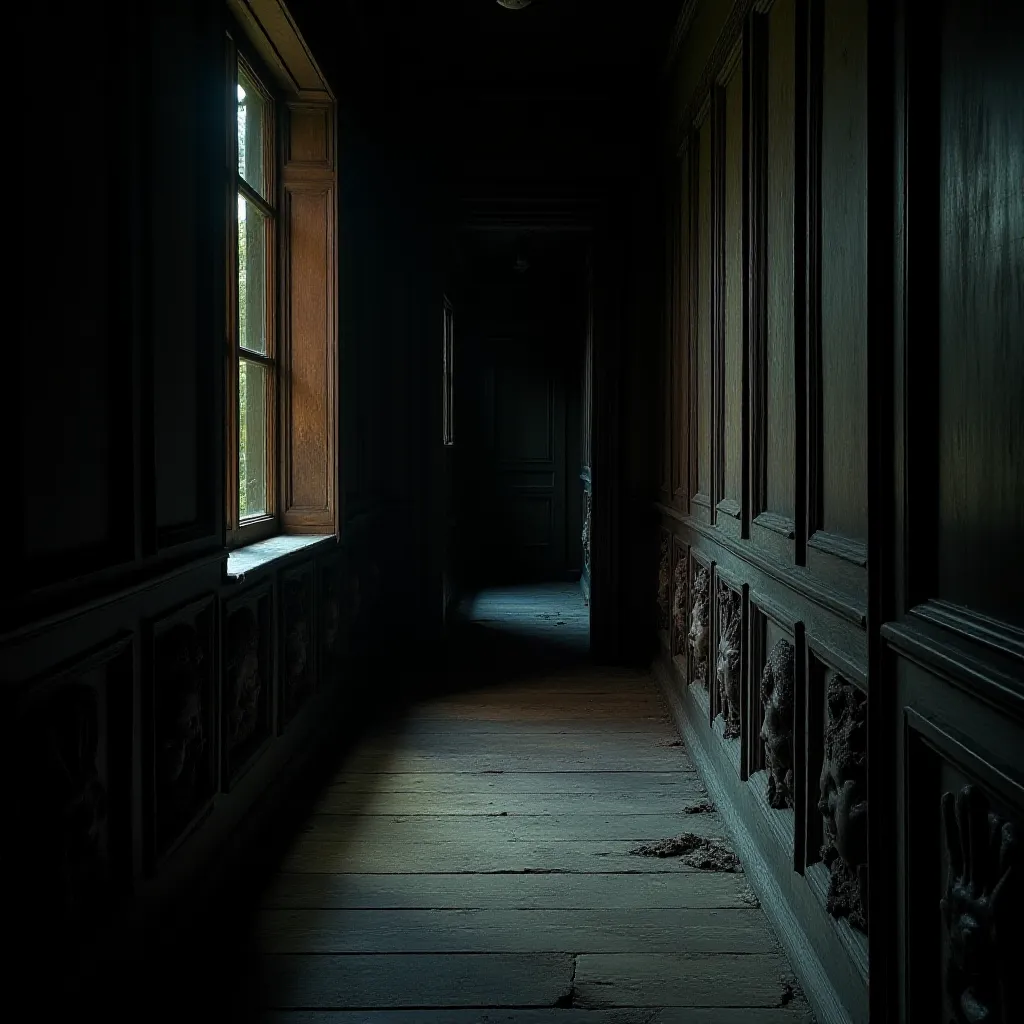The Haunting Legacy of Edgar Montrose’s Mansion

Edgar Montrose’s mansion stood as a chilling monument to a time long forgotten, its once-elegant mint-colored exterior now deteriorating, a ghostly reminder of madness long past. Towering turrets twisted in ways that defied any semblance of order, curling like melted wax as they seemed to push against the oppressive weight of time. Every part of the mansion screamed of an era lost, a world consumed by beauty and madness.
But it was inside, within the decaying rooms of Montrose’s private sanctuary, that the true horror of the mansion revealed itself. The unsettling intricacy of the woodwork, from the faces that leered at all who entered to the hands that reached from the dark recesses of the walls, felt almost as though the house itself had once been alive, pulsating with the fears and dreams of its long-dead occupants.
The Forgotten Library of Edgar Montrose

In the heart of the mansion, where Edgar Montrose once spent countless hours in solitude, the library stood as a testament to a man’s obsession with knowledge. Now, the shelves were empty, save for a few brittle volumes whose pages crumbled at the slightest touch. Books, once vital to the mansion’s lore, had long been forgotten, left to rot with their bindings. The grand chair by the fireplace, where Montrose likely spent his nights reading, was overturned, its once-gilded legs now lost to rust and decay. The air was thick with the scent of mildew, and dust settled over every surface, hiding the mansion’s tragic past.
The Parlor of Distorted Reflections

The parlor, where Edgar Montrose entertained guests in his heyday, had long since fallen into decay. Velvet chairs, once luxurious, were now shredded remnants of their former selves. The grand chandelier, crooked and half-fallen, cast unsettling reflections across the room. In the corner, a music box lay open on the mantle, its melody silenced by the passing years. The glass windows, now broken in uneven, jagged shards, allowed slivers of light to creep in, leaving shadows that distorted the room in the most unnerving of ways. A sense of something forgotten lingered here, as if the room had been abandoned in haste, leaving behind only echoes of a grand but long-lost era.
The Unsettling Corridor of Forgotten Paths

The corridor was perhaps the most unnerving part of the mansion. The long, narrow hallway stretched ahead, its once-beautiful wooden panels now warped with age and neglect. Faces, eyes, and hands reached from the walls, twisted into grotesque shapes as if they had once been a part of some dark ritual. The floorboards creaked and moaned beneath the weight of history, some warped and raised, others sunken into the rotting wood. The door at the end of the corridor was unnervingly narrow, as though meant for someone— or something—that no longer existed. In the distance, a cold draft seemed to whisper through the cracks, hinting at something far more sinister that had once moved through these halls.
The mansion, once a reflection of Edgar Montrose’s brilliance and madness, now stood as a haunting relic of a forgotten time. Inside, the legacy of Montrose’s obsession lived on—creeping through the rooms and corridors, twisting and turning like the architecture itself. Forgotten yet alive, the mansion waited, as if ready to reclaim what it had lost.